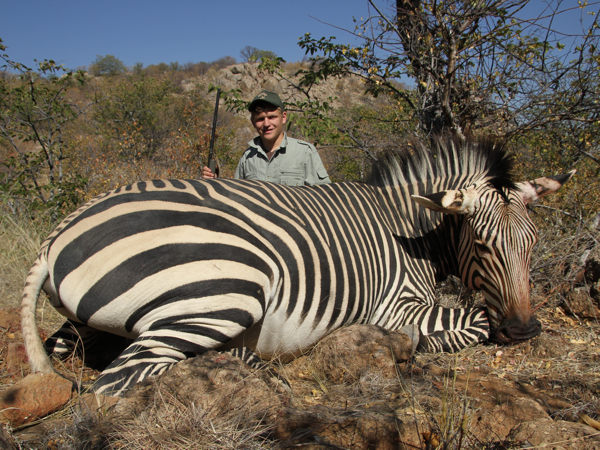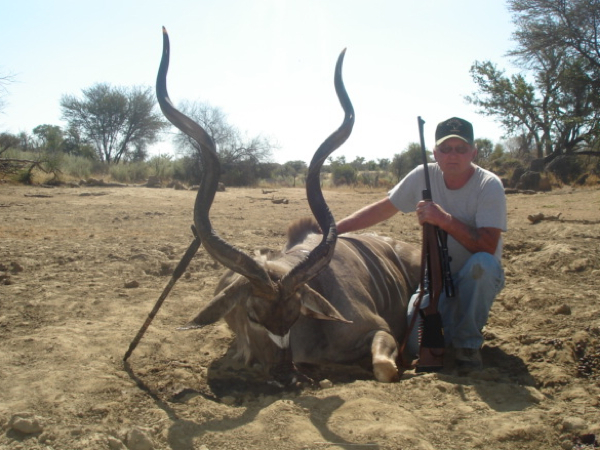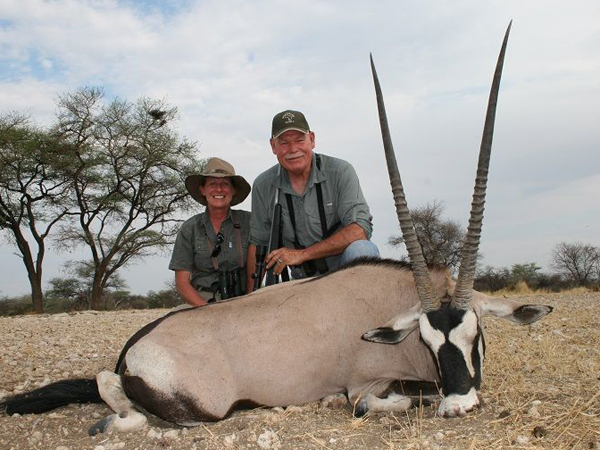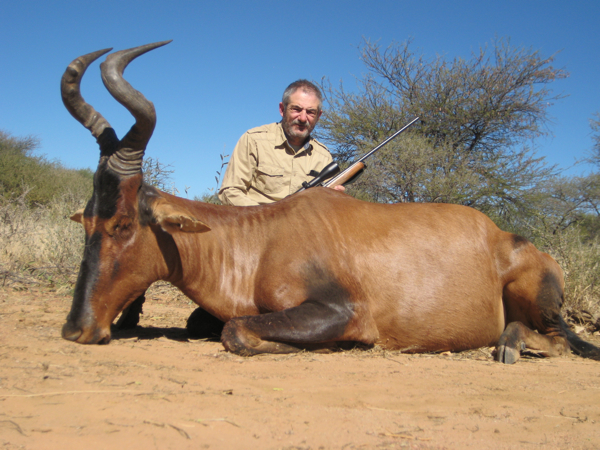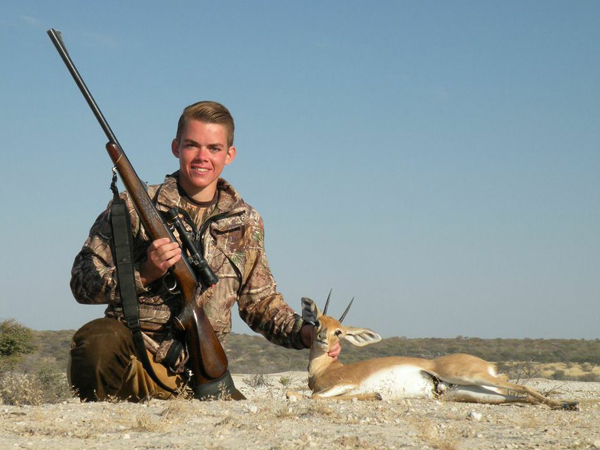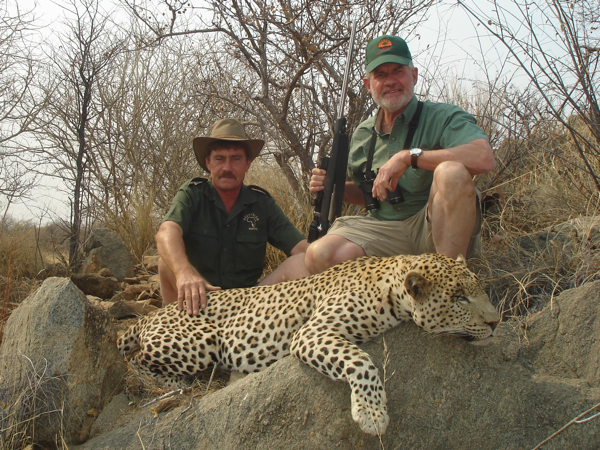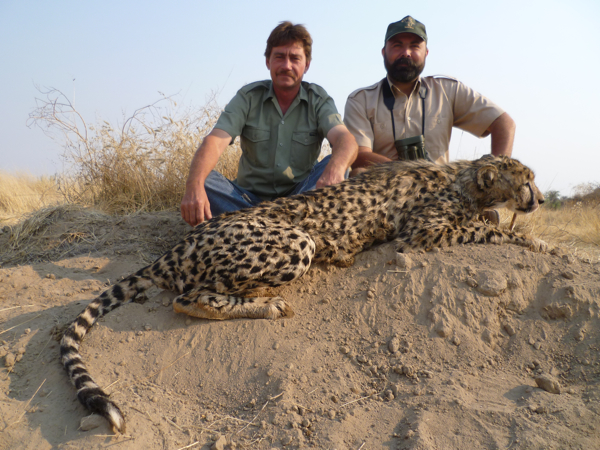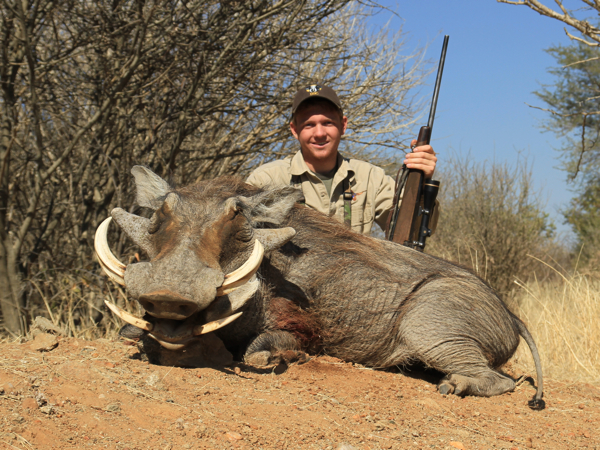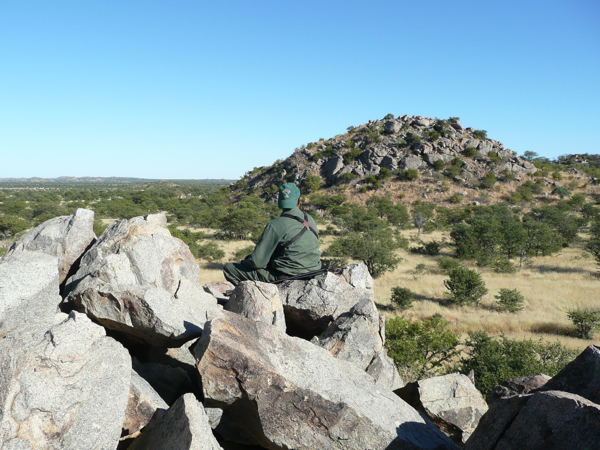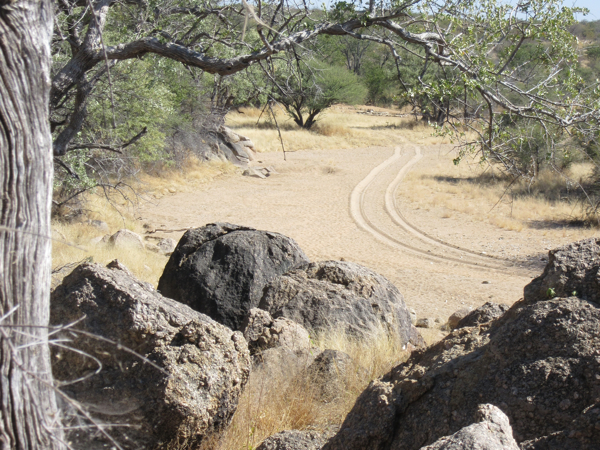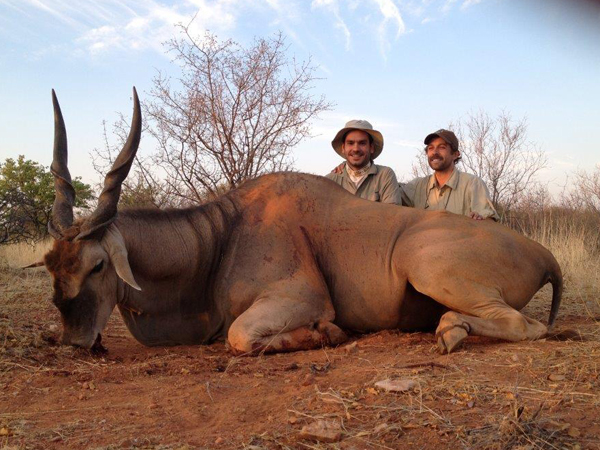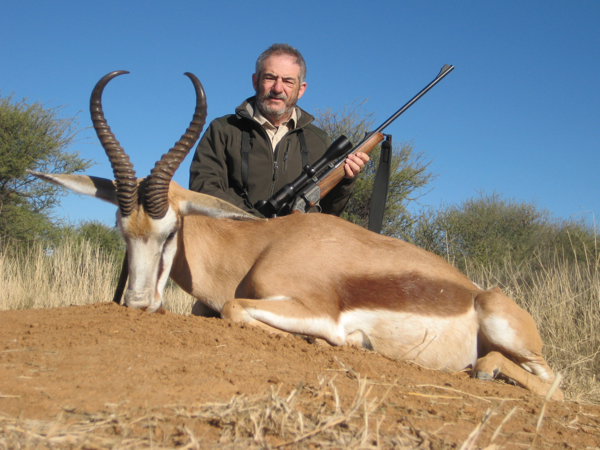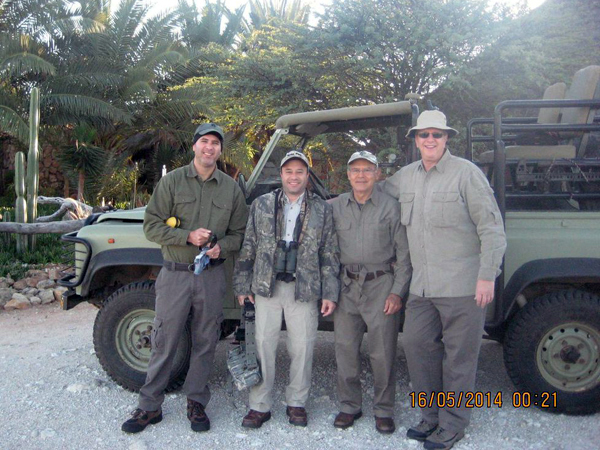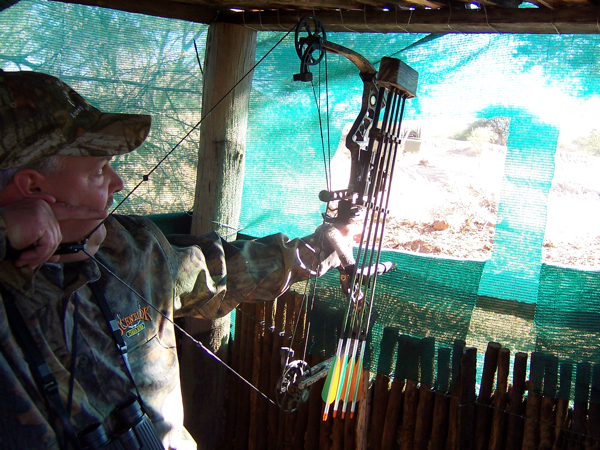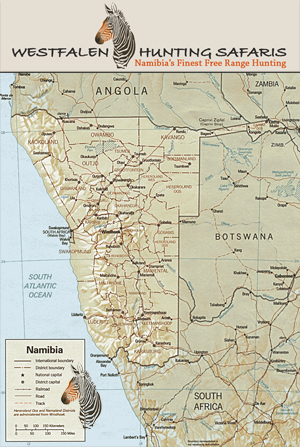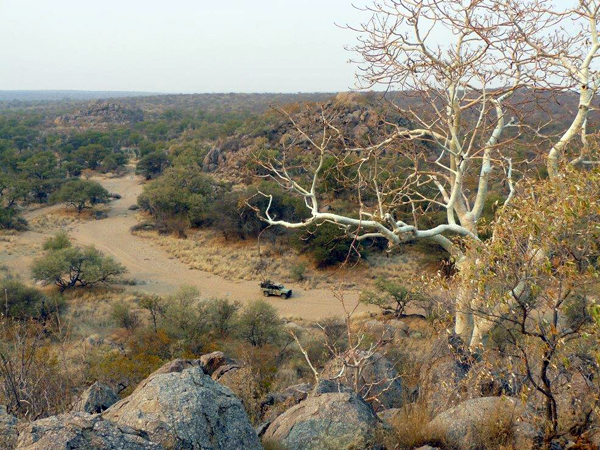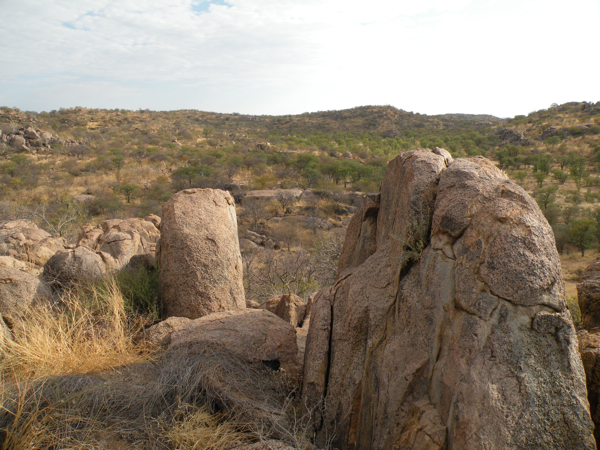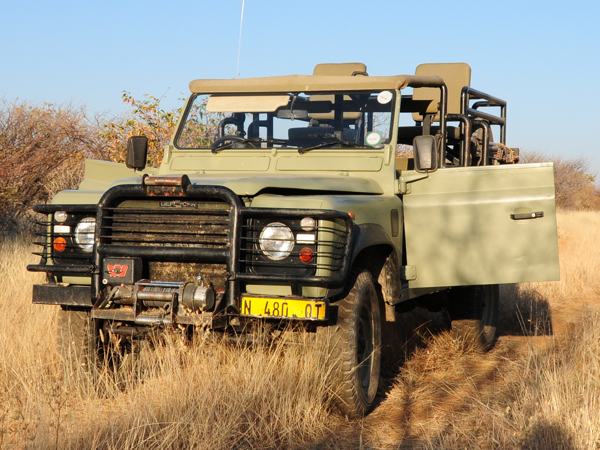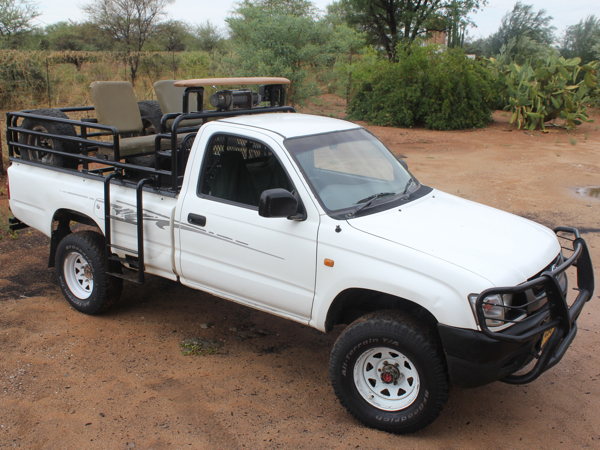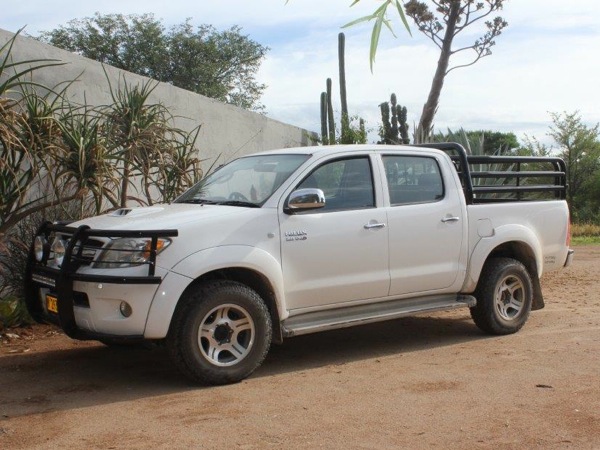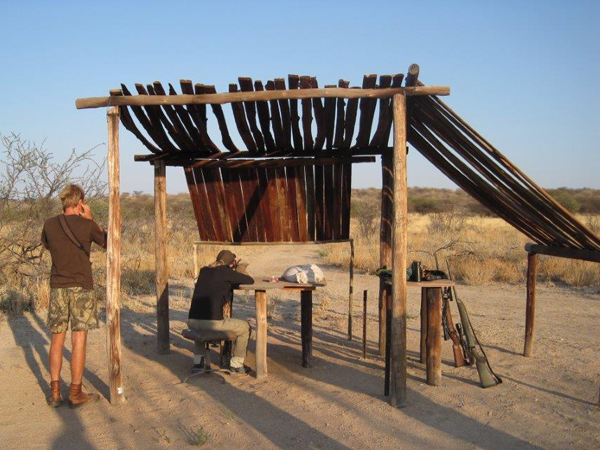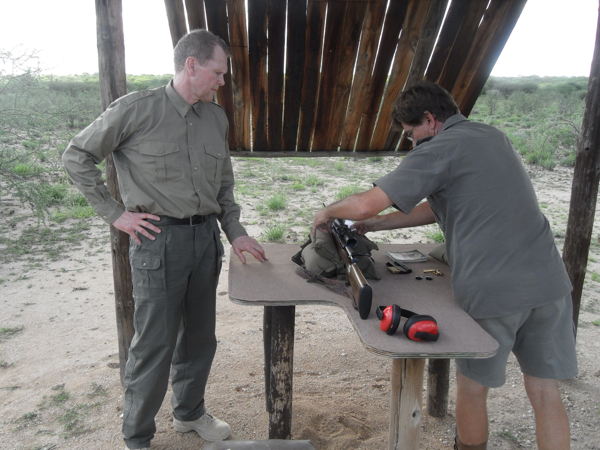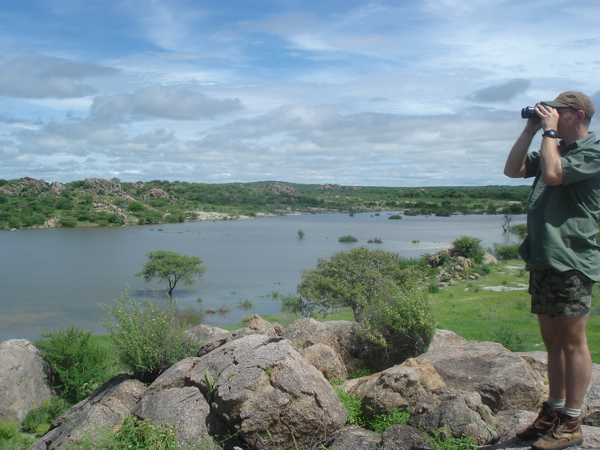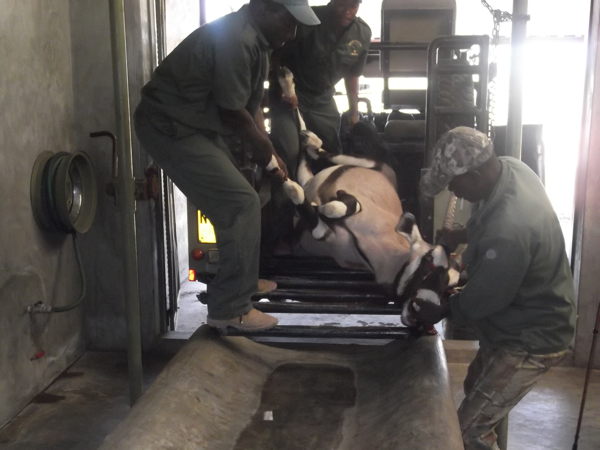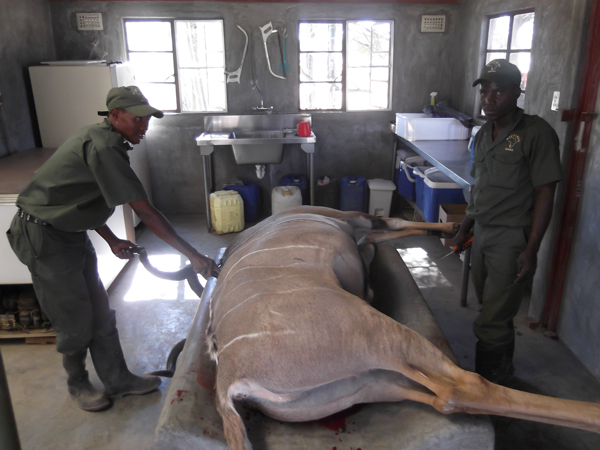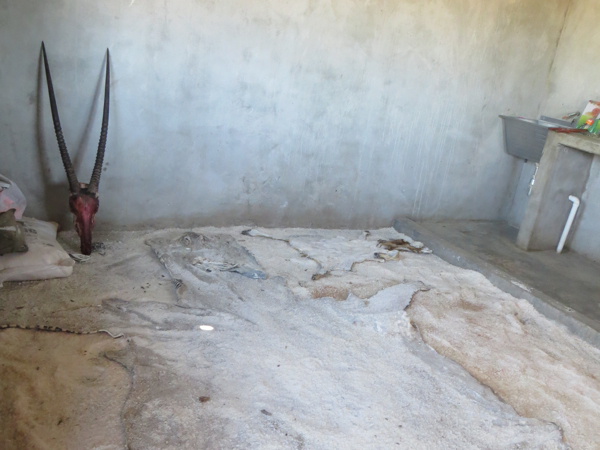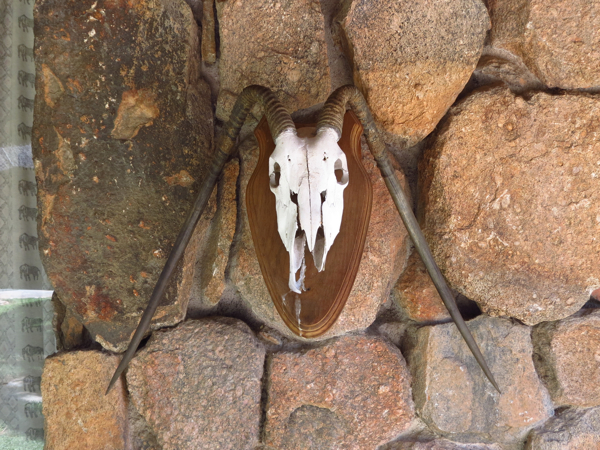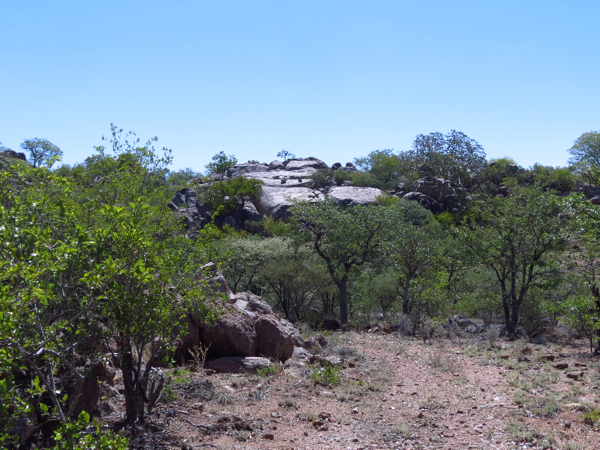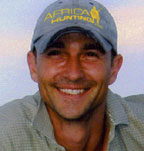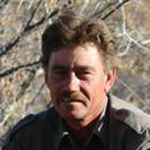Links to sections below…
Your Hunting Safari in Namibia →
A Typical Hunting Day →
Bow Hunting Namibia →
Map of Namibia with Westfalen Hunting Safaris →
Namibia Hunting Season and Climate →
Our Hunting Team and Vehicles →
Arms and Ammunition →
Hunting License and Permits →
Field Preparation of Trophies →
Dip Pack and Taxidermist →
Trophy Shipping Agent →
Shipping & Importing Your Hunting Trophies Back →
Permits and Importation Procedures for Trophies →
U.S. Fish & Wildlife and CITES Permits for Trophies →
CDC for Baboon and Warthog Trophies →
General Information about Hunting in Namibia →
Your Hunting Safari in Namibia ←
At Westfalen Hunting Safaris we offer some of the finest free range hunting in Namibia. My wife and I, John & Juliana van der Westhuizen established our own hunting outfit twenty years ago and have been building an impeccable reputation conducting old school walk and stalk ethical hunts with unsurpassed hospitality ever since. We are dedicated and deeply care about making the entire safari experience excellent from begin to end for the hunter and their guests.
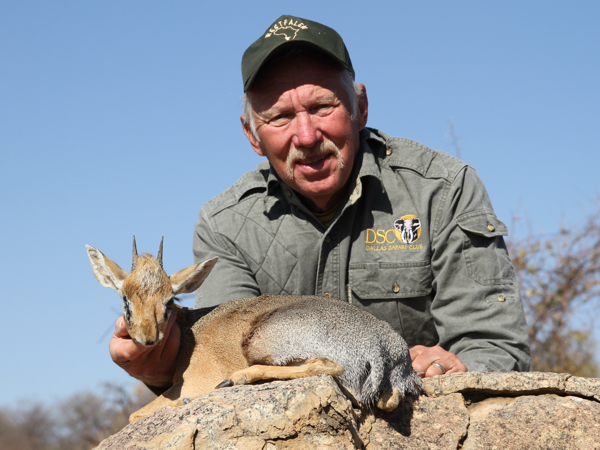
Damara Dik-Dik
Our hunting area is located in a malaria free area in Northern Namibia just below Etosha National Park. Our private property is 37,000 acres (15,000 hectares) and part of the Loxodonta Africana Conservancy which covers over 650,000 acres (263,000 hectares) and is comprised of fifty-one privately owned properties including ours. We hunt on our free range property and have exclusive hunting rights on five other connected neighbors free range properties 150,000 acres (61,000 hectares). We also have access to hunting on the entire conservancy which is predominantly free range as well.
Westfalen Hunting Safaris is a conservation success story that has resulted in a continuously increasing amount of game resulting from decades of meticulous game management. We truly care about, believe in and practice conservation through utilization and have absolute respect for nature as do those who choose to hunt with us.
Our hunting area offers an outstanding opportunity to hunt the magnificent and tough black and tan Hartmann’s Mountain Zebra in its’ natural environment; an experience that will undoubtedly be one of the highlights of your hunting safari. Hunting a mountain Zebra in his rocky natural habitat is challenging as well as hugely rewarding. Our unrestricted property is also teaming with excellent trophy quality indigenous game such as Greater Kudu, Gemsbok, Red Hartebeest, Warthog, Klipspringer, the diminutive Damara Dik-Dik, Leopard and Cheetah (for info on Leopard hunting click here and for info on Cheetah hunting click here). To see our complete list of 24 free range species click here.
Not only are we the only area in the world where you can hunt this diverse combination of truly wild trophy animals but we have one of the rare properties in Namibia where you can encounter free roaming Elephants, which provides wonderful photographic opportunities. The Elephants that roam our area can be dangerous and unpredictable, as you would expect wild Elephants to be, and sometimes determine what area we can hunt on any given day. We are not just playing with words when we say free range hunting, we are really passionate about keeping Africa’s wildlife wild. If you feel that way too, then Westfalen Hunting Safaris is THE place for you to hunt in Namibia!
Westfalen Hunting Safaris is located in a part of Namibia that offers a lot of interesting and diverse terrain. You will find rugged mountainous areas that can only be explored on foot where relatively large populations of the shy Dik-Dik and agile Klipspringer live as well as the Mountain Zebra.
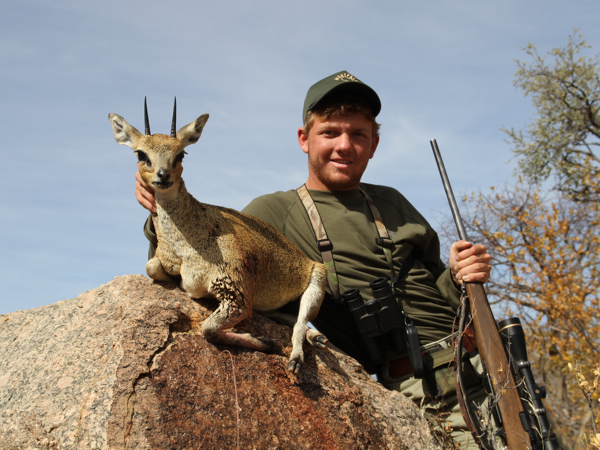
Klipspringer
There are large areas of Mopane woodland with granite “koppies” (rocky outcroppings which we use as viewpoints for hunting) where much of the plains game prefer that are typical to Southern Africa. And you can find Leopards well as many diverse species near the dry riverbeds seeking shade and cover under the tall tree canopies. We have open areas to rolling hills and three rivers that run through the property, you will definitely be challenged and in awe at the spectacular scenery that you will experience hunting with us.
If you are interested in hunting more species than are available on our free range area, we can take you to a game fenced property where we have sole hunting rights for species such as Cape Eland, Blue Wildebeest, Black Wildebeest, Waterbuck and Impala. This amazing game preserve is 23,000 acres (15,000 hectares) in size that lies about an hour and half from Westfalen Camp and is home to a very successful Rhino breeding program with over 60 Rhinos living on the property.

Giraffe
Every hunting safari we do is custom designed and personalized to fulfill your wishes, we offer rifle and bow hunting and hunts that combine the two. Your unsurpassed satisfaction is our priority.
A Typical Hunting Day ←
A typical hunting day starts at around 6:00 am with a full hearty breakfast that changes from day to day (eggs, bacon, sausage, steak, freshly baked bread, toast, cereal, yogurt, juice, coffee and tea).
We try to be hunting in the veld by 7:00am at the latest and based upon your priorities we will head to high points where we can scan from or drive to particular known locations where we can stop and walk into areas where we are most likely to spot the game that you are looking for and we can begin our stalk. We normally hunt by spot and stalk but the method of hunting of course always has to do with the preferences and physical ability of the hunter. The PH is always in contact with the driver to eliminate the need to walk all the way back to the car and waste time. If an animal has been taken, the car will come and load the game and take it back to camp separately, depending upon whether the hunter wants to return to camp at that time or continue hunting, always with the intention to maximize on the amount of time dedicated to hunting.
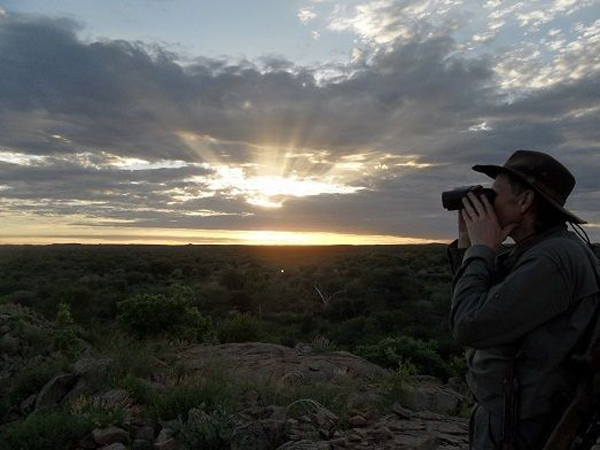
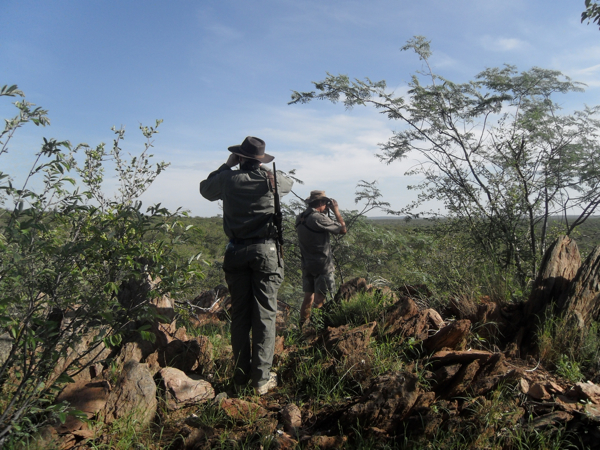
Normally we have very nice lunch packs in the bush depending upon how far away from camp we are, the priorities of the hunter and of course everything depends upon what the hunter wants to do. Lunch packs are eaten under a big shady tree, by the riverbed or a waterhole or even on the back of the truck if the plan is to hunt as much as possible. Otherwise if a more leisurely pace is preferred we can return to Westfalen Camp for a sit down lunch for some quiet time or an afternoon nap can be taken to avoid hunting during the hottest part of day.
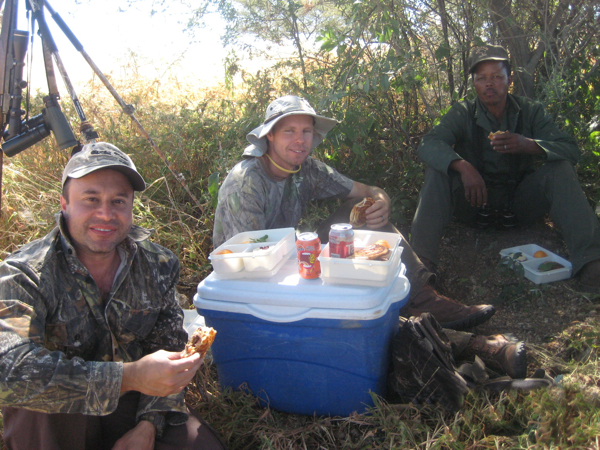
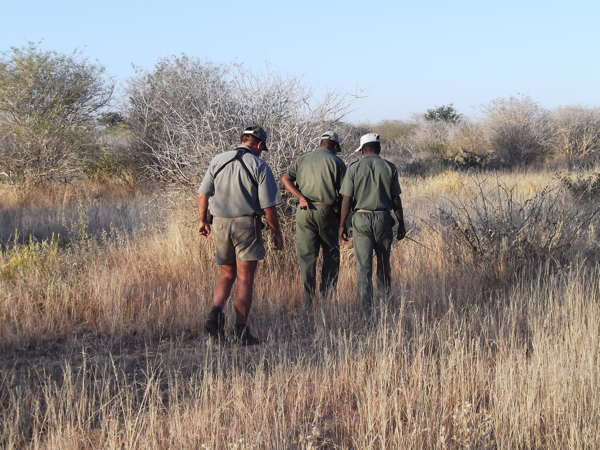
We continue hunting in the afternoon as we do in the morning then normally only heading back to Westfalen Camp so we can arrive there at last light. We then spend some quality time gathering around the fire for some drinks and then have a wonderful dinner around 7:30 to 8:00 depending upon how late we get back. The meat is all cooked over coals and eaten at a beautifully laid table with great wine and the conversation continues under the canopy of the milky way by the fire until exhaustion sets in.

Bow Hunting Namibia ←
Bowhunters, familiar with the country, consider the overall conditions for bow hunting in Namibia particularly suited to their sport. Possessing a great population of plains game for hunting makes it a paradise for any hunter, but climate and terrain are the features that make it so well-adapted to bow hunting. The driest months for trophy hunting in Namibia are September through November and therefore are the most conducive for a bow hunting safari. We can easily combine bow and rifle hunting for the hunter who wants to experience some of both. Or we can conduct a fully dedicated bow hunt for the hardcore bowhunter who is committed to his sport.
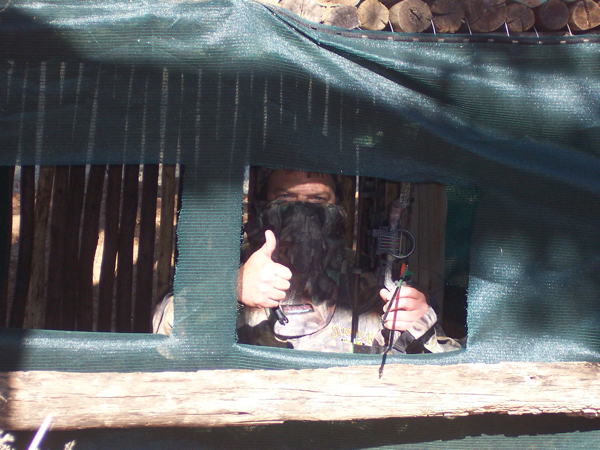
Westfalen Hunting Safaris offers excellent bowhunting on our free range hunting area. You will find twenty-five water points and natural waterholes where everyday plains game congregate, you will certainly see a good amount of game and have ample opportunity for success. A number of bow hunting techniques are used from the bowhunter lying in ambush in areas frequented by game or stalking their prey. The majority of bowhunting certainly takes place from fixed and strategically positioned bow hunting blinds, ground hides and elevated stands near waterholes and salt licks, which is usually the preferred method during the drier winter months. The challenge of a spot and stalk bow hunt in full camouflage may be undertaken by those wishing to test their bowhunting skills.
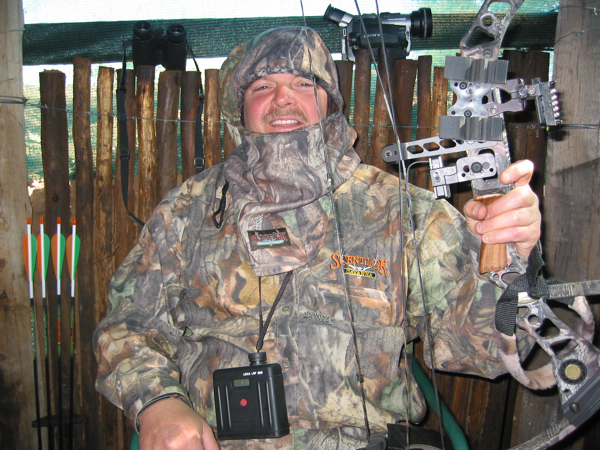
We have several built-in underground bow blinds situated strategically at waterholes that ensure that trophy animals get within range and provide optimal shots for the bowhunter. The bow blinds are placed in relationship to the waterholes and salt licks to put the bowhunter as close to the relaxed and unaware game as possible. Shooting distances range from 10 to 40 yards (10 to 40 meters). We also have a few high towers and natural rock piles that provide great set ups for the bowhunter as well as makeshift blinds that offer great flexibility.
Bow hunting for trophies in Namibia may only take place on a bow hunting ranch which is registered for this purpose with Ministry of Environment and Tourism (MET). Westfalen Hunting Safaris meets all of the qualifications required to conduct bow hunting in Namibia. To be a bow hunting outfitter in Namibia, the hunting territory must be inspected and approved to become a nationally registered bow hunting ranch, and the outfitter must have one Professional Hunter in possession of a valid Namibia bowhunting license. John is a qualified as a bow hunter Master Hunting Guide.
Bowhunting permits for all species must be obtained by a licensed bow hunting outfitter and clearly stipulate “BOWHUNTING” at the top of the page. Namibian law states that a hunter may take only two animals of each species per year on a regular trophy hunting permit, irrespective of if the trophies are exported or not. Namibia does not allow dangerous game (Elephant, Hippopotamus, Crocodile, Buffalo, Lion, Leopard) hunting by bow, with the exception of Cheetah hunting.
We recommend bringing two well-tuned hunting bows of draw weight not less than 50lbs, or 70lbs if you will be hunting African big game (see Namibia bowhunting equipment requirements below). Long bowhunting, recurve bowhunting and compound bowhunting is allowed, but crossbows are illegal in Namibia.
Arrows can be made out of wood, fiberglass, carbon or aluminum and the shaft must have a minimum length of 19.68 inches (500 mm). The arrows must be fitted with broadheads of modern configuration with at least two fixed cutting blades and a minimum length and width of 1 inch (26 mm). Broadheads may not be barbed or have serrated edges, mechanical broadheads are legal in Namibia. Special arrow points such as judo points, bird points or blunt points may be used for bowhunting birds only.
A range finder can be a valuable tool for assessing distance in our unfamiliar hunting enviroment. A good supply of arrows, strings and other spares should be brought along, as there is virtually no bowhunting equipment available in Namibia. The most suitable colors for camouflage are a combination of muted gray, brown and yellow.
Minimum Equipment Requirements for Bow Hunting in Namibia
Large Game
Bow Kinetic Energy 65 ft/lbs
Arrow Weight 450 grain
(Greater Kudu, Cape Eland, Oryx / Gemsbok, Red Hartebeest, Blue Wildebeest, Black Wildebeest, Hartmann’s Zebra, Burchell’s Zebra, Giraffe, Sable Antelope, Roan Antelope, Waterbuck, Tsessebe, etc.)
Medium Game
Bow Kinetic Energy 40 ft/lbs
Arrow Weight 400 grain
(Warthog, Cheetah, Nyala, Chacma Baboon, etc.)
Small Game
Bow Kinetic Energy 25 ft/lbs
Arrow Weight 350 grain
(Springbok, Impala, Blesbok, Gray Duiker, Steenbok, Ostrich, Caracal, Black-Faced Impala, Red Lechwe, Damara Dik-Dik, Klipspringer, Black-Backed Jackal, Game Birds, etc.)
There is no required permit or charges for traveling with bows and arrows to and/or through Namibia. Crossbows are not permitted.
Map of Namibia with Westfalen Hunting Safaris ←
Our hunting territory is located in a malaria-free zone in the Kunene region of Northern Namibia. Westfalen Hunting Safaris territory is South of the Etosha National Park, renowned for its multitude game and for their conservation of rare and endangered species and majestic beauty.
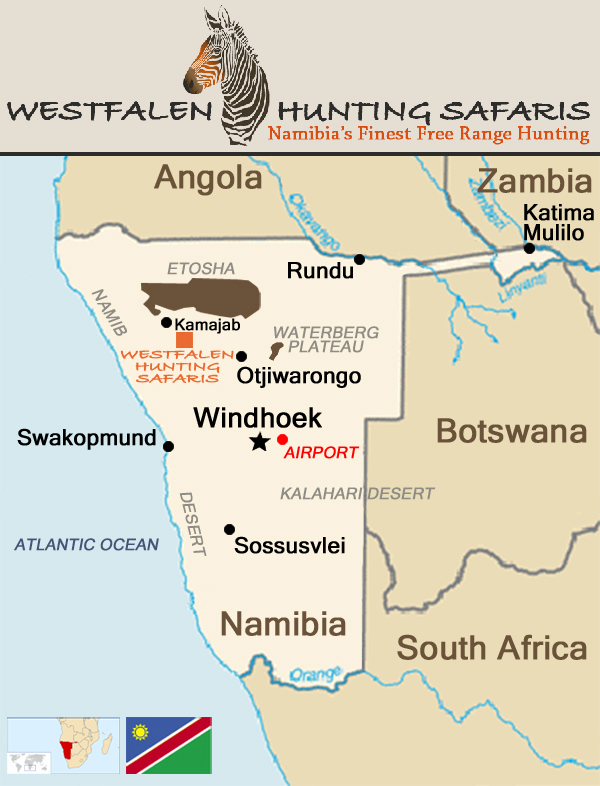
Map of Namibia showing the location of Westfalen Hunting Safaris
Namibia Hunting Season and Climate ←
Our trophy hunting season in Namibia opens in February and runs through November, being 10 months long it incorporates each of the four seasons. There are no particular months when plains game hunting is necessarily better, but time constraints or personal considerations such as weather, touring, bow hunting or specific seasonal activities might make a certain period of time more desirable to you. Keep in mind while pondering your dates for hunting in Namibia, that seasons in Namibia, since we are in the Southern hemisphere are opposite of those in the Northern hemisphere.
Located in the northern high plains of Namibia at an elevation of 4250 feet (1300 meters), the temperature range can be rather extreme, typically varying 25° F (15° C) between daily highs and lows. During the early months of the hunting season, February to April, the occasional rainstorm can disrupt the clear sunny skies; although there may be heavy showers they are usually short in duration and typically occur in the late afternoon or evening. More rain falling in February and progressively less as the season continues.
On average we have about 300 sunny days per year. The climate in Namibia is quite pleasant, we have low humidity and dry heat is much more tolerable and more conducive to hunting than is the case in most other destinations for hunting in Africa. Another benefit of the arid climate in our specific region is that Westfalen Hunting Safaris is in a malaria-free zone. With an absence of mosquitoes carrying malaria or yellow fever and no tsetse flies, overall we have a low insect population for Africa, which makes Westfalen a safer destination for hunters who wish to bring their family. To properly prepare for your hunt in Namibia, click here to visit our Travel Information page.
| Average Low/High Temperature | ||||||||||||
|---|---|---|---|---|---|---|---|---|---|---|---|---|
| Month | Jan | Feb | Mar | Apr | May | Jun | Jul | Aug | Sep | Oct | Nov | Dec |
| F° | 63/88 | 58/80 | 55/76 | 52/76 | 53/82 | 52/79 | 48/78 | 45/77 | 49/83 | 53/86 | 62/90 | 61/86 |
| C° | 17/31 | 14/27 | 13/24 | 11/24 | 12/28 | 11/26 | 9/26 | 7/25 | 10/29 | 12/30 | 17/32 | 16/30 |
Our Hunting Team and Vehicles ←
At Westfalen Hunting Safaris John is the main full time Professional Hunter and we have one full time native Hunting Guide who assists on 2×1 hunts. We also use several freelance PH’s that know our property and hunt to our standards who are all very familiar with and operate regularly within the conservancy area. We are also always joined by a driver/tracker who is also a skilled skinner.

To ensure a trouble free and safe hunting safari, we have two reliable well-maintained and fully equipped four-wheel drive vehicles which are used for hunting; one Land Rover Defender and one Toyota Hilux. For more hunters, additional vehicles will be provided by the freelance PH. All of our open-vehicles are customized particularly for comfort and hunting purposes and carry a first aid kit. Cool boxes containing water and other refreshments and snacks will be brought along on each vehicle for your needs and enjoyment.
Arms and Ammunition ←
While most shots are taken from within an average of 110 to 165 yards (100 to 150 meters), they can range from fairly close in thicker bush to relatively long distances up to 200 to 250 yards (180 to 230 meters) on open areas, so a good variable scope is suggested, you may also consider bringing a shooting stick or you can use one of ours.
We encourage you to bring your own rifle which you are the most comfortable and proficient using. If you are unable or do not wish to travel with your own firearm we have a selection of rifles in different calibers that are available for rental by the day (see list below). Rifle sight-in will be done prior to the commencement of your hunting safari at our well equipped 100 yard (100 meter) shooting range to ensure your rifle shoots properly before you go in search of that dream trophy.
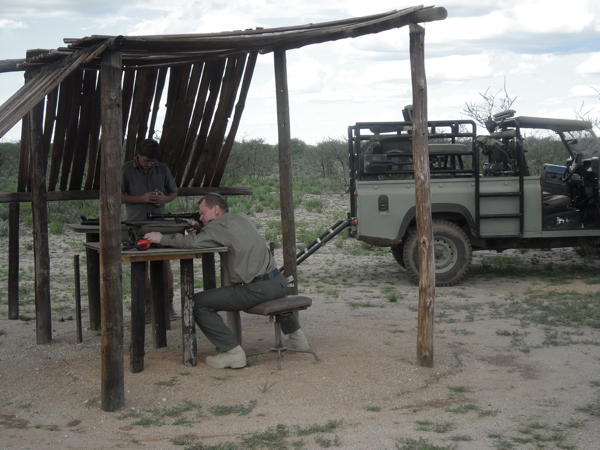
Depending on how many animals you aim to shoot, about fifty rounds of ammunition per caliber should be sufficient for a ten-day hunt. One hundred rounds of ammunition per firearm is the maximum allowable. We think it best that you bring some type of wearable rifle cartridge carrier.
Good shot placement is more important than rifle power any day so it’s a good idea to practice shooting at these distances and from shooting sticks before you get here. Any caliber .270 or higher may be used for most plains game hunting but we strongly recommend a rifle well suited for African antelope such as a .300 Winchester Magnum, 338, 7mm, 30-06 or similar caliber rifle or higher with premium soft nose ammunition. Ammunition choice of bullet should be swift-A Frame, Woodleigh, Barnes X, Nosler partition or Hornady soft nose. A good quality variable rifle scope with a 3×9 power will be adequate. Handguns, automatic weapons and solid point cartridges are not permitted in Namibia.
Rifles available for hire:
One Browning 30.06 with 9 power Leupold scope
One Bruno 30.06 with 9 power Lynx scope
One H&H Browning .375 with 9 power Lynx scope
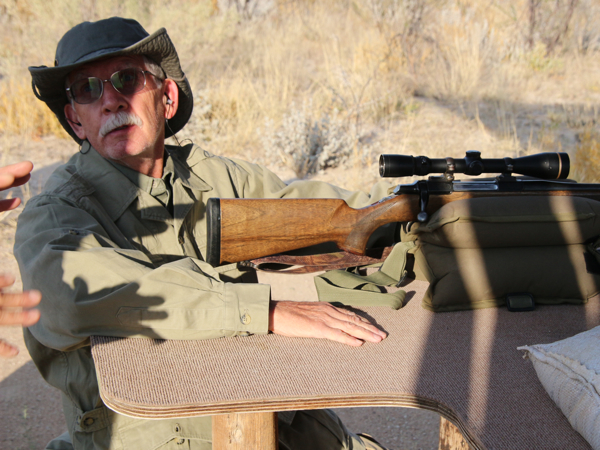
Hunting License and Permits ←
Once your hunting safari has been confirmed, Westfalen Hunting Safaris will obtain your hunting license and hunting permits on your behalf. For us to apply on your behalf for these documents, the Hunting Application Form must be filled out by you and sent to us well before the commencement of your hunting safari. It may be completed and submitted to us online by clicking here. Namibian law states that a hunter may take only two animals of each species per year on a regular trophy hunting permit, irrespective of if the trophies are exported or not.
Field Preparation of Trophies ←
The field preparation of trophies (skinning, salting, drying and tagging) is included in our daily rate prices as well as normal transport of your trophies to our local taxidermist in Namibia, Taxidermy Studio & Tannery in Otjiwarongo. On rare occasions a special trip to the taxidermist may be required, for instance for transport of a Giraffe skin that cannot wait to be treated, then an extra transport fee might be charged by the taxidermist. With many years of experience refining their skills, our skinners working under the guidance of your PH will ensure that each of your hunting trophies is prepared to your specifications and treated with the exacting care it deserves.
Dip Pack and Taxidermist ←
You may choose to have your African taxidermy work done in Namibia, partially or fully, or you can have it sent to be done by your own African animal taxidermist. What ever you decide your hunting trophies will be taken to a taxidermist in Namibia for processing, after the first preparation of your hunting trophies which is done at Westfalen Hunting Safaris. It usually takes us anywhere from 3 to 4 weeks to be finish with the first preparation of your trophies and have them delivered to the taxidermist. Should you not be doing your trophies’ taxidermy work in Namibia, we recommend that you bring to Namibia your taxidermist’s contact information along with their trophy tags, which your taxidermist should easily be able to supply you with. Laminated trophy tags labeled with all relevant delivery information including your name, specific wildlife port of entry in the US, and final shipping destination with full contact information (usually the taxidermist or you). Your taxidermist should be the one to provide these ready made tags to you well prior to your trip, and they should also give a couple of copies of this information to you on paper to give to us.
Once the taxidermist has your trophies, they will contact you to confirm your order for the work to be done and request payment. Payment to the taxidermist is done by wire transfer directly to them, usually a month or so after you have returned from your hunting safari. The taxidermist will then process your trophies for exportation into the country of destination which will be done through the shipping agent. Once the work by the taxidermist is done, the shipping agent will be contacting you for payment (see next section).
Should you want detailed information, or a quote for the dip pack only or the dip pack and taxidermy of your trophies please find the contact information below of the taxidermist in Namibia that we have been working with for many years and that we refer to our clients.
Kings Taxidermy
Mr. Riaan Dreyer, owner & taxidermist
Tilla Vorster, client service & administrator
physical address 27 Bahnhof Street, Otjiwarongo, Namibia
mailing address P.O. Box 1059, Otjiwarongo, Namibia
website none at this time
email kingstaxidermy@iway.na
email admin1@kingstaxidermy.net
tel 264 (67) 30.6578
fax 264 (67) 30.6579
For Taxidermy Price List in US$, click on the following link: Taxidermy Price List US$
For Taxidermy Price List in Euro, click on the following link: Taxidermy Price List Euro
For Dip & Pack Price List in US$, click on the following link: Dip & Pack Price List US$
For Dip & Pack Price List in Euro, click on the following link: Dip & Pack Price List Euro
Trophy Shipping Agent ←
In regard to the shipment of your hunting trophies, we refer our clients to African Shipping Services to ensure that they are handled and shipped with care so that they reach their destination safely. Owner and manager of African Shipping Services, Rainer Sentefol has many years of experience in the Namibian transport industry and consistently provides high customer service, expert advice and competitive pricing, since every shipment is unique, they constantly source the most beneficial rates for you.
African Shipping Services’ storage facilities have been specially built to ensure that your hunting trophies are kept safe and secure. Shipping is their core business and they are focused on hunting trophy shipping in particular.
Once African Shipping Services has received your hunting trophies from the taxidermist in Namibia, they will be stored in their warehouse for safe keeping until such time that they are ready to be shipped. You will be contacted by them with shipping costs, proposed routing and they will confirm with you that all shipment details are correct. You can also inform them of your preferred agent and customs broker. Once you have agreed with the arrangements, they will obtain the necessary paperwork such as Export Permit, CITES, Health Certificate, Transit Permits and Certificate of Origin. Throughout the whole process they will be in touch with you via email or phone.
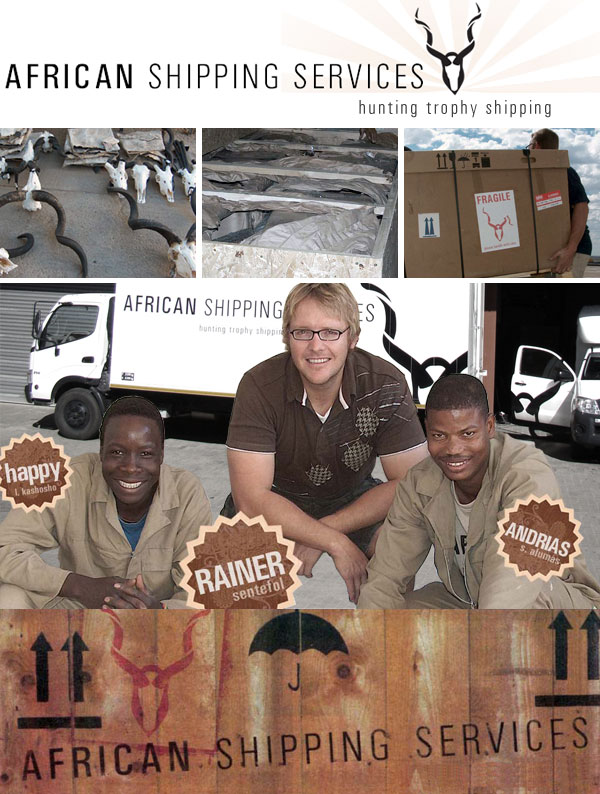
Depending on the type of shipment, once the payment is processed, and you give the final go ahead and all paperwork is completed, they will do the final preparations for dispatch, for instance Insurance, Flight Bookings, Waybills and Customs Clearance. They personally deliver your hunting trophies to the airport of departure and will notify you once more when your hunting trophies are safely on their way.
Feel free to contact African Shipping Services to check for your closest Port of Entry and find out if ocean freight is a viable option to ship your trophies. African Shipping Services has a longstanding relationship with most major shipping companies, clearing agents and customs brokers worldwide that specialize in the transportation, distribution and clearing of hunting trophies in your home country. If you prefer to consign your hunting trophies to your own clearing agent with whom you have a working relationship, please feel free to advise them accordingly. If not specifically included in your shipping quote, clearing fees and delivery charges from Port of Entry are payable by you.
Should you want detailed information, or a quote for the shipping of your trophies to the country of destination you can find their contact information below. African Shipping Services is the shipping agent in Namibia that we have been working with for several years and that we refer to our clients.
African Shipping Services
Mr. Rainer Sentefol
email rainer@africanshippingservices.com
website www.AfricanShippingServices.com
tel 264 (61) 305.821
fax 264 (61) 309.822
cel 264 (81) 306.3025
Shipping & Importing Your Hunting Trophies Back ←
I highly recommend that when it come to the intricacies of importing your hunting trophies do yourself a favor and hire experts to facilitate the process. Tom Kelly from TROPHY SHIPPERS (www.trophyshippers.com) offers an incredible service at a great price.
TROPHY SHIPPERS is a family owned company and have been in business since 1981. They are a customs brokerage and freight forwarding company that is dedicated to helping hunters quickly and efficiently get their hunting trophies home. They know what your hunting trophies mean to you, because they are a family of hunters themselves. If you have trophies that you need brought back to the United States or are planning a trip to Africa to hunt or anywhere in the world, let TROPHY SHIPPERS handle all of the paperwork, clearances, and shipments for you!
They truly provide an invaluable full service for managing an increasingly more detailed and complex process for the importation of your trophies from start to finish. If you would like to contact them, TROPHY SHIPPERS can be reached at Cell +1 (815) 529-0087 / Office +1 (630) 595-7300, or via their website www.trophyshippers.com, click here.
Permits and Importation Procedures for Trophies ←
All trophy importation permits from country of residence are the hunters’ responsibility to obtain; we are unable to apply for them on your behalf.
Laws and regulations pertaining to permits and importation for sport hunted trophies may change, therefore this article includes links to send you directly to the source rather than supply you with information that could be out of date.
Some species may not be able to be imported back into your country of residence or whatever country you intend on importing your trophies into. You can find information on the importation of sport hunted trophies for the United States at the U.S. Fish & Wildlife Service at http://www.fws.gov/permits/ or the Convention on International Trade in Endangered Species of Wild Fauna and Flora (CITES) at http://www.cites.org/. For other countries’ importation regulations please refer to their appropriate agencies.
It is legal to hunt a Cheetah and Black-Faced Impala in Namibia; however please note that the USA does not permit the importation of Cheetah and Black-Faced Impala hunting trophies. Canada, many countries in South America, Mexico and most countries in Europe, such as Spain and France will permit the importation of a Cheetah and Black-Faced Impala trophy.
Hunters must be identified on their hunting license and hunting permit by their full name as it appears on their passport. A copy of the passport of a trophy hunter must be attached to the application for a predator trophy hunting permit.
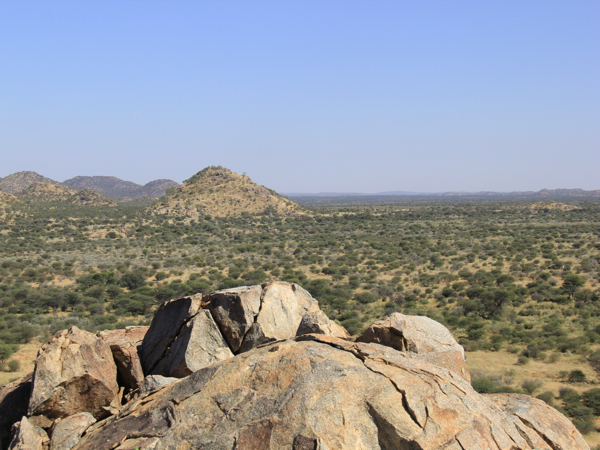
U.S. Fish & Wildlife and CITES Permits for Trophies ←
All trophy importation permits from country of residence are the hunters’ responsibility to obtain; we are unable to apply for them on your behalf.
The import, export, or re-export of a number of sport hunted trophies may be regulated by a conservation law or treaty, which is implemented by the U.S. Fish & Wildlife Service, and requires a permit. This regulation is part of domestic and international conservation efforts to protect wildlife subject to international trade. You can find up to date information on the importation of sport hunted trophies, how to obtain a permit, as well as instructions on how to fill out the application by going directly to U.S. Fish & Wildlife Service at www.fws.gov/permits/.
The importation of particular sport hunted trophies requires a CITES permit (i.e. African Elephant, White Rhinoceros, Leopard, etc.), you will need to submit an application to the U.S. Fish & Wildlife Service. You can download the CITES permit application forms at www.fws.gov/international/permits/sporthunted.html. CITES stands for Convention on International Trade in Endangered Species of Wild Fauna and Flora, visit their web site at www.cites.org.
Should either of the above links be broken visit the home page of U.S. Fish & Wildlife Service at www.fws.gov and just simply browse through their web site to find the link to the permit page.
Here are a few resources from the U.S. Fish & Wildlife Service which you might find interesting:
Importing Personal Sport Hunted Trophies from Africa, Guidelines for U.S. Hunters
Importing Your Leopard or African Elephant Trophy
Here are a few resources from CITES which you might find interesting:
How CITES works (the species covered by CITES are listed in three Appendices according to the degree of protection they need)
The CITES Appendices
Appendices I, II & III
CITES Species Database (search species by country)
Residents of other countries should consult their local CITES Permit agency or refer to their appropriate agencies.
Center for Disease Control for Baboon and Warthog Trophies ←
All trophy importation permits from country of residence are the hunters’ responsibility to obtain; we are unable to apply for them on your behalf.
For hunters wishing to import or transport primate trophies such as Baboon, skin or skull that has not been fully taxidermied or treated so that it is non-infectious, you will need to get a permit to import or transport etiologic agents hosts or vectors of human disease from the Center for Disease Control & Prevention (CDC) Etiologic Agent Import Permit Program. Fully taxidermied or treated Baboon trophies will not require such permit for importation into the United States.
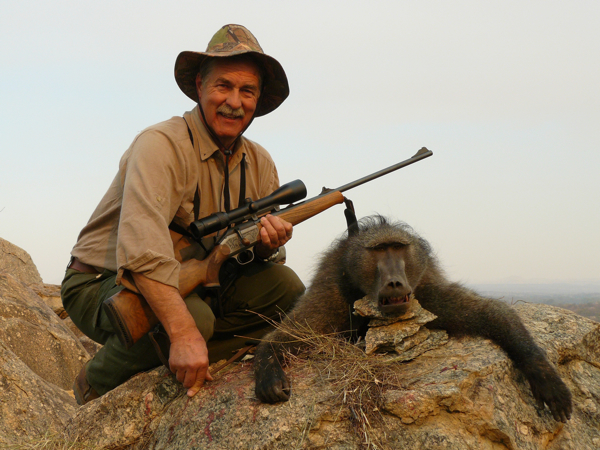
Chacma Baboon
Unworked dipped Baboon (primate) and Warthog (swine) trophy parts have to be packed separately.
They can however be;
shipped together (in it’s own package) as an extra package with the main consignment OR
integrated in it’s own package within the larger main consignment – as long as it is packed separately – contamination free – and marked accordingly. The local taxidermist should be aware of the special shipping conditions applicable to both primate and swine trophies.
You can find up to date information on the import or transport of etiologic agents hosts or vectors of human disease, how to obtain a permit, as well as instruction on how to fill out the application by going directly to the Center for Disease Control & Prevention (CDC) Etiologic Agent Import Permit Program at www.cdc.gov/od/eaipp/ or visiting the links below.
Bringing Animal Products into the United States
CDC Import Permit Applications Forms
CDC Guidance for Importation of Non-Human Primate Trophies
CDC Frequently Asked Questions about Etiological Agent Import Permits
Residents of other countries should consult their local agencies.
General Information about Hunting in Namibia ←
Namibia, formerly known as South West Africa, has a rich and interesting history. At one time the British Empire took partial possession of Namibia and later the Germans colonized the country until the First World War. Namibia was then placed under the administrative rule of South Africa and was finally granted independence on March 21, 1990.
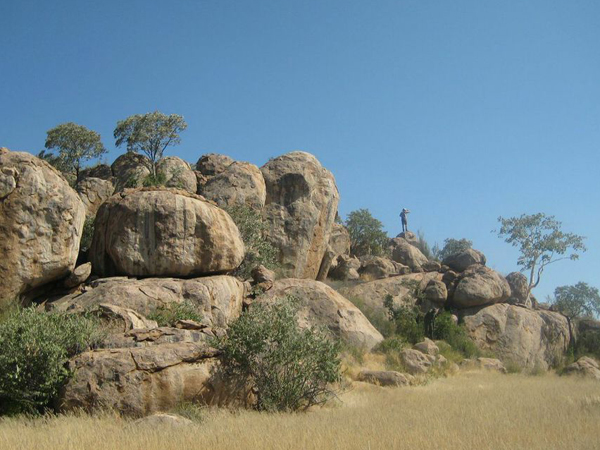
Since independence, Namibia has benefited from great political stability. It is an easy, safe and affordable hunting destination for a great plains game hunting safari up to a high end big five hunting safari. This is why it is so popular amongst hunters, second only to South Africa in the numbers of hunters who visit annually, averaging more than 5,000 international hunters per year. Namibia has become a favorite destination for first time hunters, family groups of hunters as well as long time African hunting veterans who appreciate the ease and benefits of hunting in Namibia.
Hunting properties range in size from private land of a few thousand acres to million acre hunting concessions where hunters can discover a country and its wildlife that are among the most beautiful, varied and rich that Africa has to offer. The hunting areas are spread throughout the country from north to south. In the vast majority of cases, these are private areas managed by their individual owners or more professional larger hunting outfits.
The majority of the hunting in Namibia takes place on private game ranches which are found throughout the country. Safari hunting is allowed on private game ranches, conservancies where hunting is permitted and within government hunting concession areas which are only found in the North of the country.
In Namibia, the habitat of the hunting areas is composed of dense thorny savanna, shrub savanna and large semi-desert plains. The terrain in some hunting areas can be challenging, even mountainous. The relatively high elevation of the central plains in much of the country where many of the prime hunting areas are located can also cause hunting to be more strenuous for those who are not used to it.
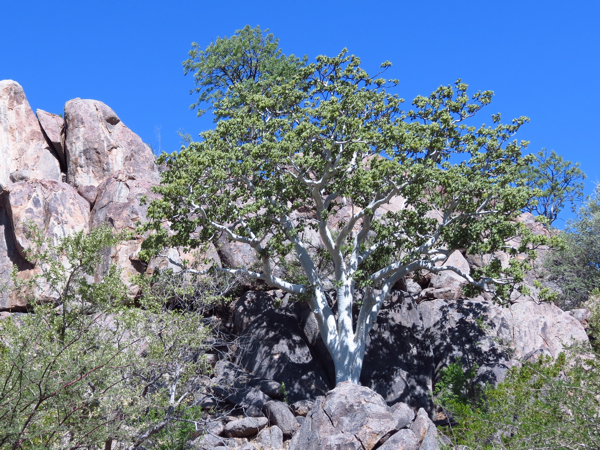
Namibia along with South Africa are the only two countries in Africa where one can hunt the entire big five; Lion, Leopard, Buffalo, Elephant and Rhino (White as well as Black Rhinoceros). Most of the plains game hunting safaris, as well as Leopard hunting, take place in the lower two thirds of Namibia. Leopards which can be found in many areas are hunted using bait. The use of dogs for hunting leopard is no longer permitted in Namibia. Lion, Buffalo, Elephant and Rhino are hunted on a limited basis and primarily in the Northern most part of the country, including the Caprivi Strip. Cheetah can be found throughout Namibia and can also be hunted.
Namibia is most well known for the availability of numerous species for plains game hunting. The most famous and emblematic animal of Namibia, the Oryx, is found throughout Namibia. The following species are also found in abundance in Namibia; Cape Eland, Greater Kudu, Blue Wildebeest, Black Wildebeest, Blesbok, Impala, Steenbok, Klipspringer, Springbok and Warthog.
Trophy hunting may take place from half an hour before sunrise until half an hour after sunset during the hunting season and no hunting is allowed with artificial light. In Namibia hunting from a vehicle is permitted. There is no regulation controlling the number of days that a hunting safari must be, if there is a minimum it is set by the hunting outfitter.

